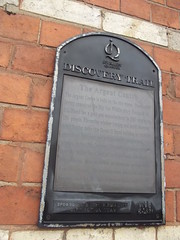The Argent Centre
Commemorated on 1 plaque
The Argent Centre The Argent Centre is built on the site where Washington Irving conceived the Rip Van Winkle story. Designed by J.G. Bland for a gold pen manufacturer in 1863 employing 250 people. Florentine window tracing and multi coloured brick fascias make this Grade II listed building and excellent example of Italianate and polychromatic architecture popular in the 19th century. Directors had steam removed from the boilers for a Turkish bath and could also fence, play billiards, chess or recline on luxurious couches which lined their rooms. The premises were converted into small business units by Midland Industrial Assocation in 1988.
The Argent Centre, Legge Lane, Jewellery Quarter, Birmingham, United Kingdom where it sited

